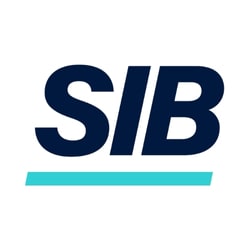When streaming company CuriosityStream hired Jason Eustace as its CFO just under a year ago, his priority was to fulfill a promise the company had made to investors two years prior of a prompt IPO.
He helped fulfill that promise in October when the company, which streams science, educational and other non-fiction programming, completed a reverse merger with Software Acquisition Group, a special purpose acquisition company (SPAC).
Now Eustace is focused on hitting revenue goals he promised the investors who bought into the company.
"That’s key, that’s paramount, that’s my North Star," he said last week in a CFO Thought Leader podcast, "to hit that revenue target at all costs."
Fast growth
The company appears to be off to a good start. It expects to post positive adjusted operating income before depreciation and amortization (AOIBDA) by 2025, fueled by several scalable lines of revenue that could pull in nearly $400 million over the next several years, according to an InvestorPlace analysis.
One of those lines of revenue is based on multi-year contracts to build co-branded streaming libraries with universities like Stanford and Georgetown.
"There is good reason to believe this endeavor will be fruitful," Bradley Freeman said last month in a TMF analysis.
With the merger, the company is sitting on roughly $500 million, about 4.7x its projected 2021 revenue, the InvestorPlace analysis said. It has about $180 million available for future growth.
"The revenue is just through the roof," Eustace said. "It's been a pretty incredible ride in a short period of time."
The InvestorPlace analysis said the company has seen a 50% compound annual growth rate over the last five years, with margins of greater than 60%. For the last three years, the company doubled its year-over-year revenue.
FP&A background
The SPAC deal was a first for Eustace, who worked with CuriosityStream founder John Hendricks years earlier at Discovery Communications, which Hendricks also founded.
"[Hendricks] has an uncanny habit of seeing around the corner," Eustace said.
At Discovery, Eustace was an FP&A specialist who oversaw an analysis for parceling out about $1.4 billion to competing divisions for new programming.
"All the general managers [were] trying to pitch to get more money," he said.
He looked at taking CuriosityStream public through a traditional IPO as well as a SPAC. Under a SPAC transaction, the company goes public by merging with a blank-check company that’s already publicly traded.
"Very quickly, we were parallel-pathing an IPO versus a SPAC," he said. "Then the pandemic hit and we had to make sure the business was going to be stable and good to go, and at the same time, keep barreling down the path for the capital raise."
That meant putting in place the pieces his finance and accounting teams would need to handle public-company scrutiny and reporting requirements.
"Much more rigorous accounting procedures needed to happen," he said. "The roles really had to get right-sized to what the company was going to be in the near future."
He hired subject matter experts to sit on the finance and FP&A sides of his operations, a change from how staff were operating before. "They were just doing a little bit of everything," he said of his finance team’s previous structure.
He also partnered with the company’s external auditors at EY. "This was the first time I was going to be doing a reverse merger and I didn’t have the time to do it twice," he said. "I wanted to make sure it was done right the first time."
The company had originally planned to do the IPO before Eustace arrived, in 2019. But the market wasn’t right. "They decided to wait another year," he said.
A capital raise managed by the previous finance chief in 2018, using a 144 A equity offering, helped ensure the company had money until the market timing was right.
"With that capital raise there was a promise we would go public within a year," he said.
Netflix competitor
CuriosityStream launched five years ago to offer the kind of non-fiction programming in which Netflix doesn’t specialize.
Hendricks "saw customers getting frustrated with their cable companies that there weren’t a lot of options … so he stood up this service across the street from Discovery Communications," Eustace said.
Today the streaming service offers some 3,000 programs; it licenses about two-thirds of them from other producers and produces the remaining third in-house.
Its in-house produced content is heavy on science and history, like documentaries on Woodstock, moon landings, and the Egyptian pyramids.
"What I love about our service is there are so many genres," he said. "I call them little holes that you can go down deep into."
The company plans to use that $180 million or so in capital it’s sitting on to increase its library to 12,000 programs in the next few years.
It benefits from its cheap production costs relative to what Netflix spends on its fiction content.
"Curiosity Stream estimates it will only spend about $60 million on content in 2021," the InvestorPlace analysis said. "By 2025 it will see that figure increasing to $150 million. However, $150 million is essentially what Netflix might pay for one season of The Crown."
And unlike many fiction programming producers, the company has been producing content throughout the pandemic.
"We’re not hamstrung," Eustace said. "When you’re shooting something in nature, you don’t have the actors and actresses you do with a normal production. Crews [still] have to deal with social distance and all that. It’s just been a new normal."
With its original programming, the company owns all rights globally. It has 13 million customers in 83 countries, but it doesn’t have access to all platforms in all of those countries, so it licenses its content out to distributors where it needs to.
"We find distribution partners who will purchase those rights from us and put those on their service, so we can continue to grow a little revenue out of that," he said. "It also acts as an opportunity for us to increase our brand awareness around the world because the more investors we talk to, the more customers know about our service."
Experience he gained years ago working at a for-profit subsidiary of National Geographic helped him understand the importance, and intricacies, of these types of distribution deals. The subsidiary, called National Geographic Ventures, partnered with Fox Cable Networks on a channel for distributing the non-profit parent’s content.
"It was a perfect marriage," he said. "You added high-class, highly produced content with a well-distributed affiliate. It helped propel them into being a more updated media company."
CFO as storyteller
Getting customers and investors and others to understand the company’s value proposition is a part of Eustace’s job as CFO, he said, but it took him years to understand that.
"As a business major in both undergrad and grad, I just focused on the hardcore finance and accounting side of the house and less on the softer side, communication skills," he said. "Starting out in my career I was good at that, but iI stalled out because I couldn’t tell the story right."
That changed when he was at Discovery Communications. He had spent almost half a year gathering and analyzing data for a project that culminated with him making a presentation to the COO.
"After I got to page 5 or 6, I saw I had lost my audience," he said. "I realized no matter how much analysis I had put into the presentation, if I couldn’t succinctly synthesize the analysis, share that story, I was DOA. So, my ‘Aha’ moment, whenever I’m sharing a deck, I look at the end of the page and I say, ‘So what?’ If at the end of every page in the deck I can’t answer a simple question why that page is there, I pull it."
That’s helped him tackle the kinds of public- and investor-facing roles he plays as CFO, and has helped him tell the story of CuriosityStream.
"If you can’t get your story across, you're done," he said.



















